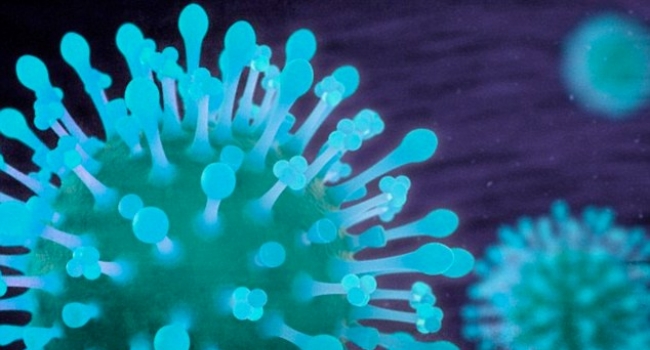- Latest news▼
-
17:35, May 17 WHO updates list of drug-resistant bacteria most threatening to human health

-
08:36, May 17 Gene discovered that plays important role in prostate cancer treatment

-
17:28, May 16 Up to 246 million older people may be exposed to heat risk by 2050 due to global warming

-
11:11, May 16 JARRL: it takes more than 12 weeks of exercise to improve cerebral blood flow

-
08:33, May 16 Cause of sudden death from heart attack is determined

-
18:24, May 15 Journal of Nutrition, Health & Aging: Moderate wine consumption reduces inflammation in the body

-
15:33, May 15 Conjoined twins in Indonesia born fused together like a 'spider' in ultra rare case

-
17:07, May 14 Armenia gets $780,000 grant to fight diabetes complications

-
11:59, May 14 Smart bandage created in Russia to treat wounds based on electrostimulation

-
19:31, May 13 Daily Mail: black beans and walnuts increase life expectancy

-
17:01, May 13 In 2024, 399 cases of measles infection confirmed in Armenia

-
13:14, May 13 Nature Medicine: New genetic form of Alzheimer's disease discovered

-
11:22, May 13 PNAS: Researchers determine how herpes virus penetrates nervous system

-
14:50, May 12 The first person to receive a genetically modified pig kidney transplant dies in the United States

-
18:36, May 11 Mum, 32, almost dies from multiple blood clots after ‘GP prescribed wrong contraceptive pill’

All materials
Virus trap could help prevent flu

Scientists have developed a 'flu trap' that can capture the virus - and prevent the spread of infection.
The so-called trap is a fabric coating for masks and air filters, which isolates the viral particles responsible for influenza.
The technology was developed by scientists at University of Manchester, and is set to be brought to market by biotec company Virustatic.
The device mimics the carbohydrate structures on the surfaces of cells that line the esophagus - also known as the food pipe- and the respiratory airways.
Paul Hope, director of Virustatic, said: 'It's a whole new preventative approach to disease and if implemented could be transformative.
'We're now at the stage where we're looking for strategic partners to take this technology forwards in terms of developing new products.'
Scientists have developed a so-called 'flu trap' - a fabric coating for masks and air filters - that can
The technology was developed after the University of Manchester team found a way to anchor sugary glycoproteins to carbon cloth.
Then, they discovered how to anchor them to less expensive materials, including cotton.
The team found that the molecules could capture and trap over 99 per cent of the flu virus that came into contact with them.
Dr Ian Rowles, of University of Manchester, said: 'This has been an exciting collaboration with Virustatic, and our research does indeed show that this technology can slow the spread of flu viruses.
'We hope that eventually we'll be able to tackle all pathogens by using this technology. So watch this space.'
The team also hopes to develop the technology further, to capture other viruses, including those responsible for Middle East Respiratory Syndrome (MERS) and Severe Acute Respiratory Syndrome (SARS).
It comes as scientists from University of North Carolina - Chapel Hill recently warned that there could soon be an outbreak of a new virus that is similar to SARS.
The new virus, called WIV1-CoV, may induce the same results in humans as SARS - starting out with flu-like symptoms and accelerating rapidly to pneumonia.
The 2003 outbreak SARS started in Asia - but soon spread to two dozen countries in North America, South America, Europe and Asia.
The outbreak infected 8,000 people - and claimed nearly 800 lives.
The new virus is very similar to SARS - as it originates from the same Chinese horseshoe bats as SARS and also binds to the same receptor inside the human body.
Dr Vineet Menachery said: ‘This virus may never jump to humans, but if it does, WIV1-CoV has the potential to seed a new outbreak with significant consequences for both public health and the global economy.’
Follow NEWS.am Medicine on Facebook and Twitter
- Video
- Event calendar
- Archive
- Most read
month
week
day
- In 2024, 399 cases of measles infection confirmed in Armenia 1448
- PNAS: Researchers determine how herpes virus penetrates nervous system 1299
- Daily Mail: black beans and walnuts increase life expectancy 1208
- Nature Medicine: New genetic form of Alzheimer's disease discovered 1189
- Armenia gets $780,000 grant to fight diabetes complications 1147
- Smart bandage created in Russia to treat wounds based on electrostimulation 1054
- Conjoined twins in Indonesia born fused together like a 'spider' in ultra rare case 1054
- Up to 246 million older people may be exposed to heat risk by 2050 due to global warming 685
- Cause of sudden death from heart attack is determined 648
- Journal of Nutrition, Health & Aging: Moderate wine consumption reduces inflammation in the body 626
- JARRL: it takes more than 12 weeks of exercise to improve cerebral blood flow 584
- WHO updates list of drug-resistant bacteria most threatening to human health 471
- Gene discovered that plays important role in prostate cancer treatment 429
- The first person to receive a genetically modified pig kidney transplant dies in the United States 423
- Find us on Facebook
- Poll





